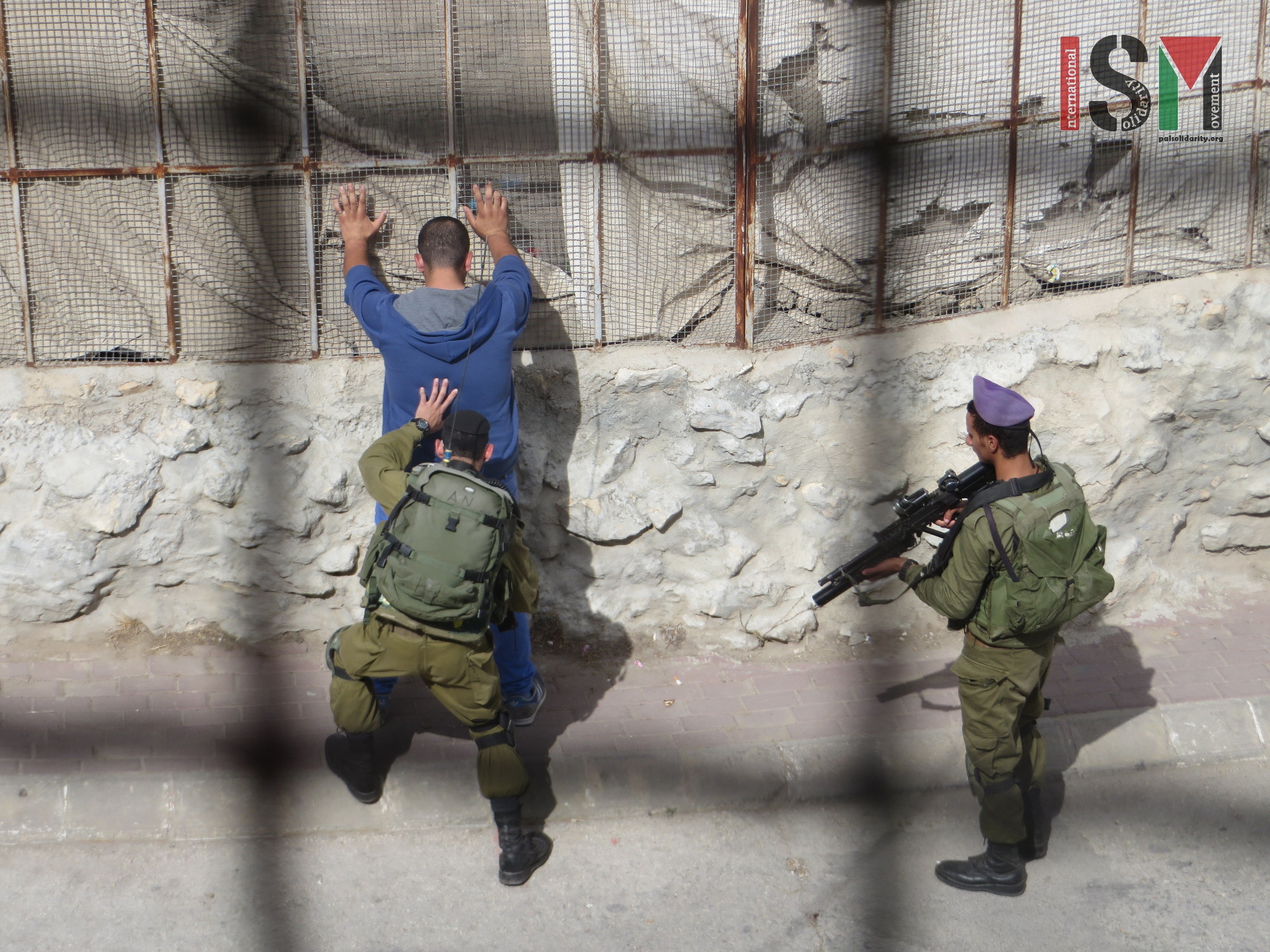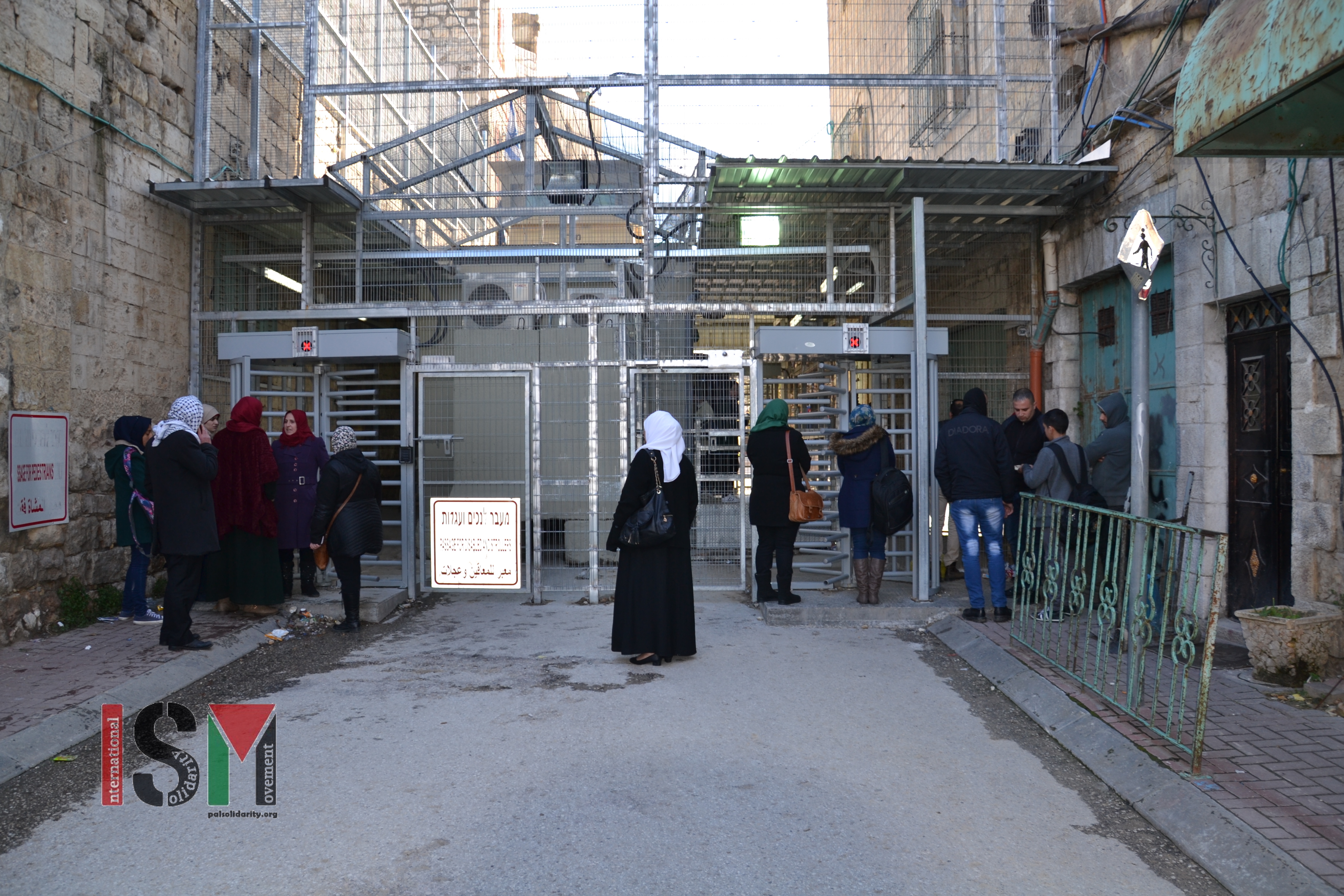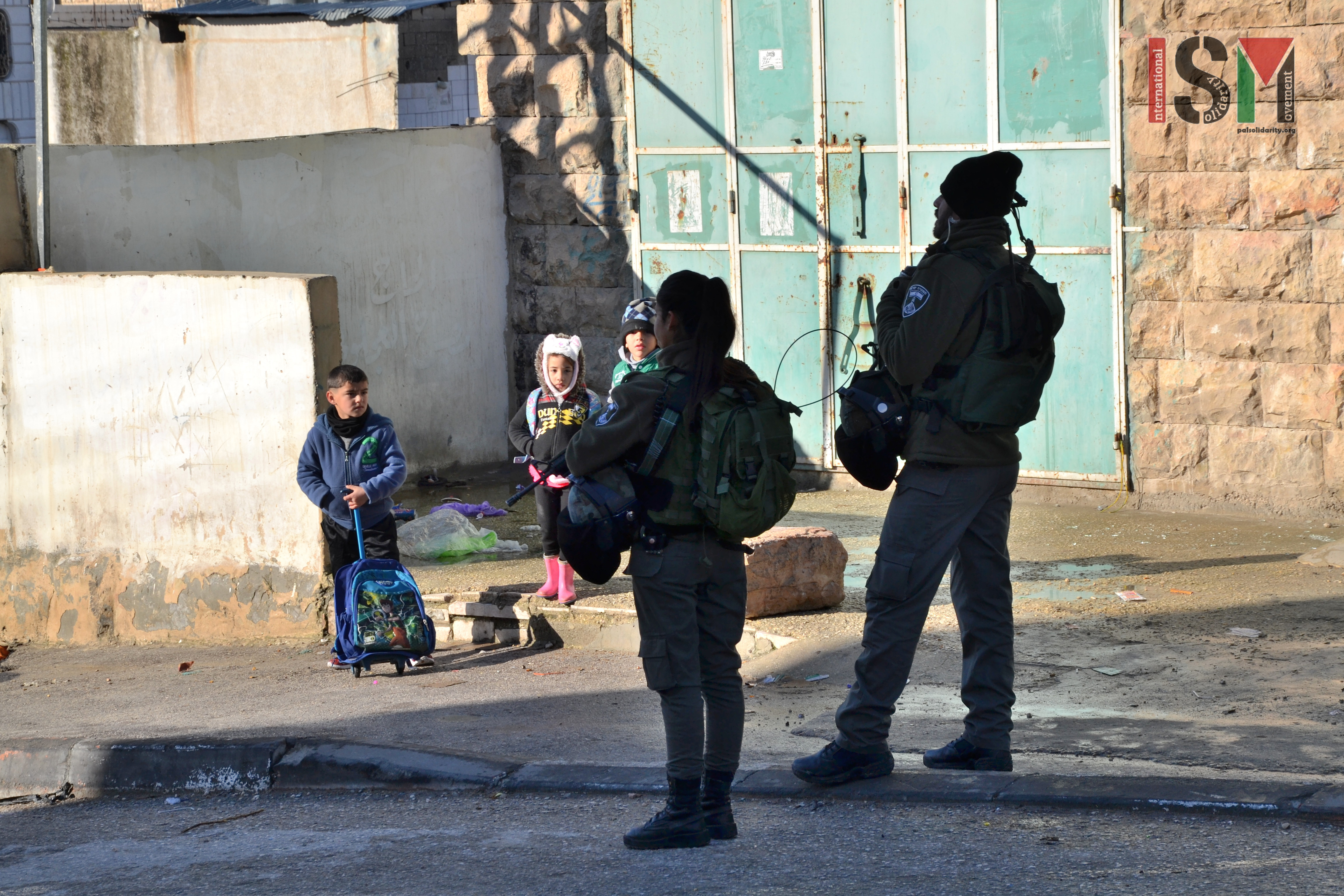Tag: Hebron
-
Humiliation
3rd February 2017 | International Solidarity Movement, al-Khalil team | Hebron, occupied Palestine No one can describe this feeling, when occupation did what it does best: humiliate, harass, humiliate. There is no words to say, today, I was treated like I’m not a human being. No words, that can put across the actual meaning. The…
-
“If your students want an education…” – Right to education violable under occupation?
2nd February 2017 | International Solidarity Movement, al-Khalil team | Hebron, occupied Palestine On Thursday morning Israeli forces detained Palestinian teachers and students from Qurtuba school for over two hours at Shuhada checkpoint in occupied al-Khalil (Hebron) without reason and despite the fact that students and teachers always have to pass the checkpoint to reach school. Israeli…
-
Collective punishment on the way to school – the Israeli forces’ ‘job’
1st February 2017 | International Solidarity Movement, al-Khalil team | Hebron, occupied Palestine On Wednesday, 1st February 2017, Israeli forces intimidated school-children on their way to school. In the process, they closed one of the main checkpoints delaying teachers and school-children as they were on their way to school. As groups of children were passing the checkpoint…



